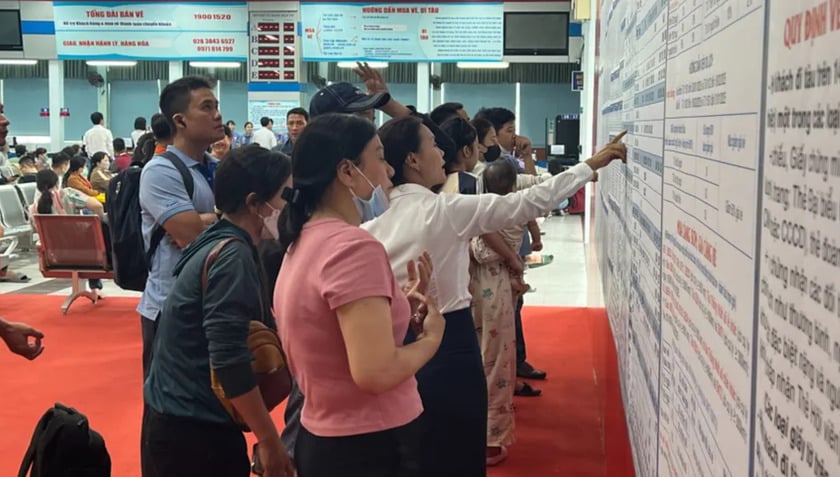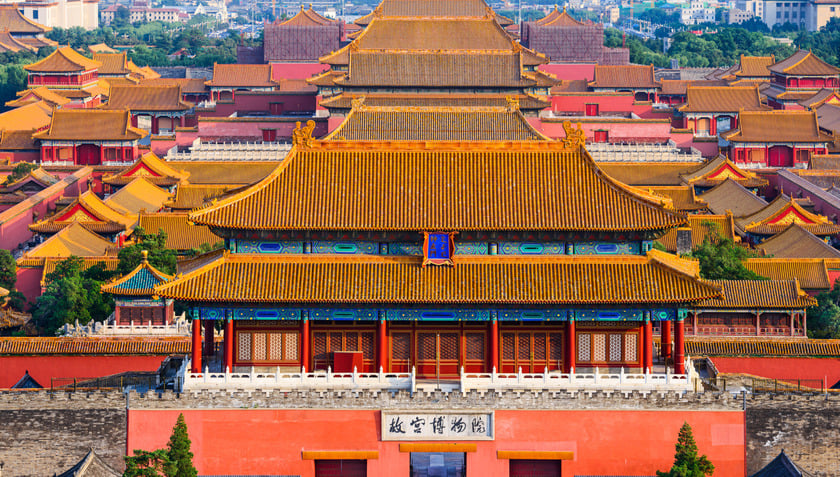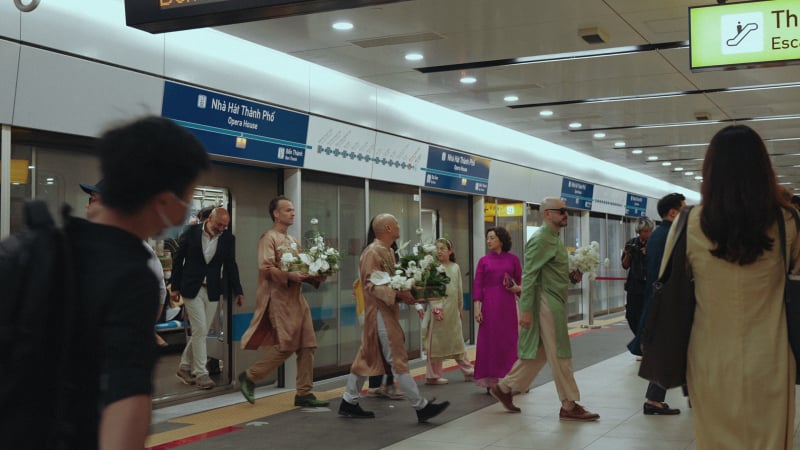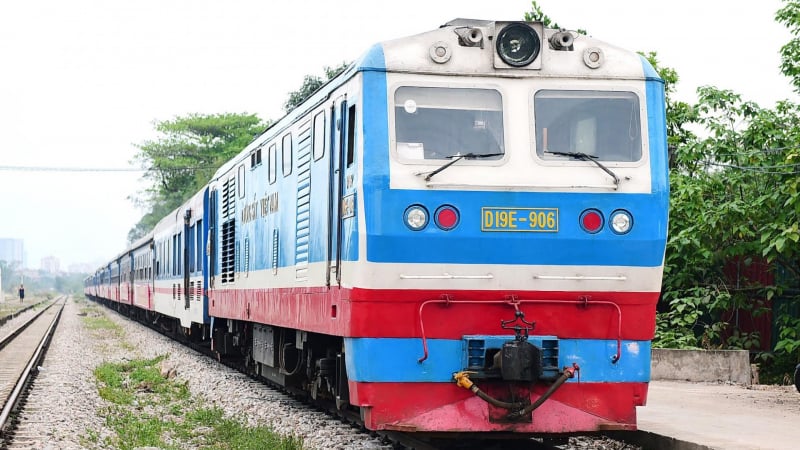On the afternoon of May 22, Vietnam Railways Corporation announced that from May 25, the Vietnam - China international passenger train will officially resume operation after 5 years of suspension due to the impact of the COVID-19 epidemic.
Accordingly, every day there will be 2 trains numbered MR1 and MR2 departing from Gia Lam station (Hanoi) to Nanning station (China) and vice versa.

The Vietnam - China international passenger train will officially resume operation after 5 years of suspension.
Train MR1 will depart from Gia Lam station at 9:20 p.m. and arrive at Nanning station at 10:06 a.m. the following day. In the opposite direction, train MR2 will depart from Nanning station at 6:05 p.m. and arrive at Gia Lam station at 5:30 a.m. the following day. Passengers will complete immigration procedures at Dong Dang station - Lang Son (Vietnam) and Bang Tuong station - Guangxi (China).

Passengers complete immigration procedures at Dong Dang station (Lang Son, Vietnam) and Bang Tuong station (Guangxi, China)
In particular, from May 27, the railway industry of the two countries will organize direct trains from Gia Lam station (Hanoi) to Beijing station (China) and vice versa. Trains depart from Gia Lam station at 9:20 p.m. every Tuesday and Friday, arriving at Beijing West station every Thursday and Sunday. Passengers can buy tickets to a third country at international transit stations in China.
In Vietnam, in addition to selling tickets to international transit stations in China, Vietnam Railways Corporation also sells tickets for domestic routes from Gia Lam station to Bac Giang, Dong Dang stations and vice versa. Passengers can buy tickets to continue to a third country by train at international transit stations in China.

Passengers can purchase tickets to travel to a third country at international transit stations in China.
Regarding ticket prices, the Hanoi - Nanning route costs about 1,000,000 VND/ticket/way, the Hanoi - Beijing route costs about 9,378,000 VND/ticket/way. In particular, children under 4 years old are free of charge, children from 4 to 12 years old are 50% off (each adult is accompanied by 01 child), groups of 6 or more people are 25% off ticket prices.
Currently, Vietnam Railways Corporation organizes the sale of international train tickets directly at the following stations: Hanoi, Gia Lam, Bac Giang and Dong Dang.

Regarding ticket prices, the Hanoi - Nanning route costs about 1 million VND/ticket, the Hanoi - Beijing route costs about 9.3 million VND/ticket.
Restoring the international passenger train operation between Vietnam and China aims to strengthen economic cooperation, improve the efficiency of exploiting railway infrastructure and expand opportunities to attract international tourists by train. Thereby, contributing to promoting bilateral trade, developing tourism, cultural exchange, people-to-people exchange, creating more options for safe, convenient, economical and environmentally friendly means of transport for the people of Vietnam and China.
Nowadays, international train travel between the two countries is increasingly convenient and fast, with immigration procedures carried out directly at international railway stations. Passengers taking the international train from Vietnam to Nanning (China) will easily continue their journey by high-speed train system to all points in the country's territory, thanks to the extensive high-speed train network.

Restoring international passenger train operations aims to strengthen economic cooperation, improve the efficiency of exploiting railway infrastructure and expand opportunities to attract international tourists by train.
The organization of international passenger trains between Vietnam and China is carried out based on the Vietnam-China Border Railway Agreement signed in 1992. Before the COVID-19 pandemic broke out, Vietnam Railways Corporation and China Railways organized daily international passenger trains between Hanoi and Nanning. The railways of the two countries expect the number of passengers to increase sharply after the resumption of this train due to the recent trend of rail travel among the people of the two countries and international tourists.
In the coming time, the railways of the two countries will monitor the density of passengers traveling by train to consider adjusting train frequency accordingly.



































